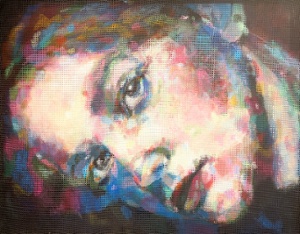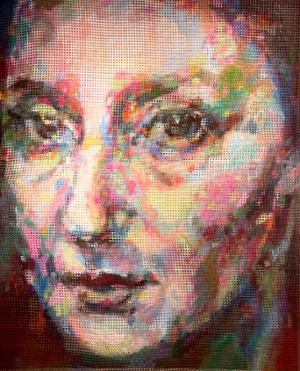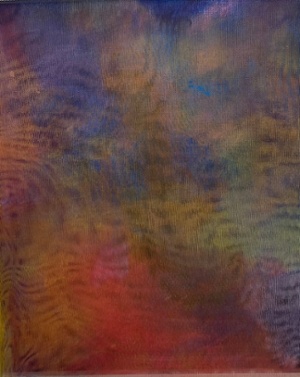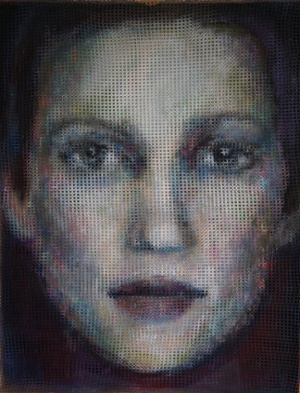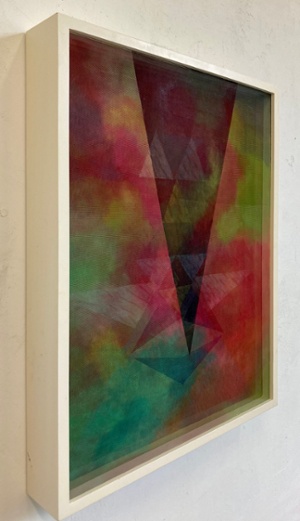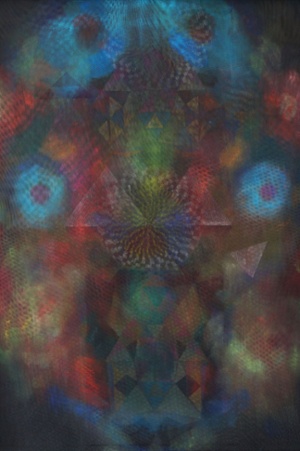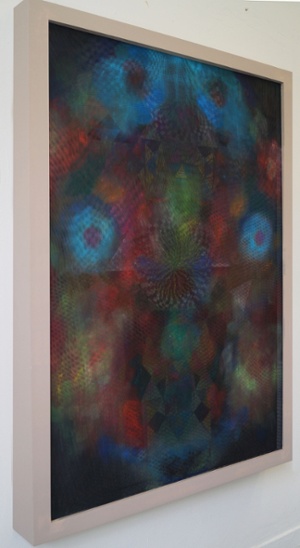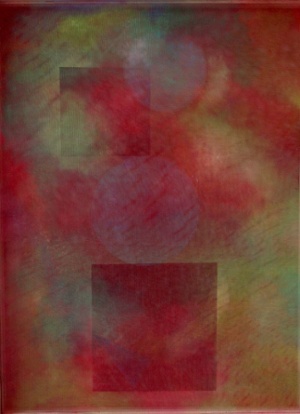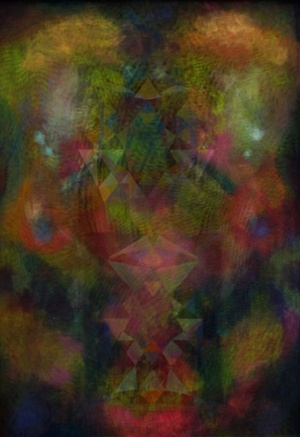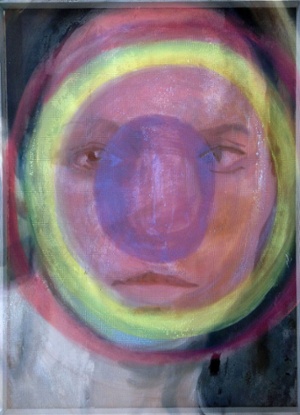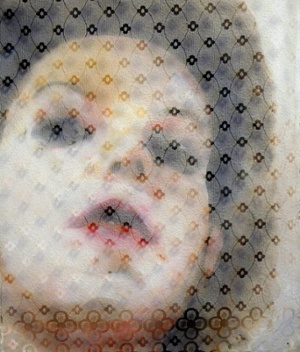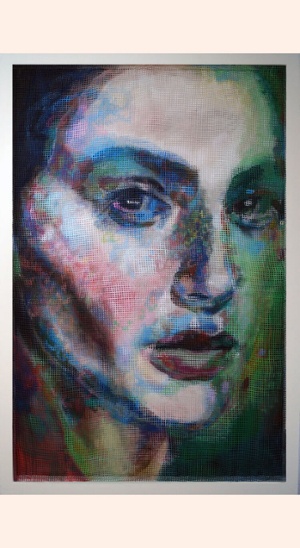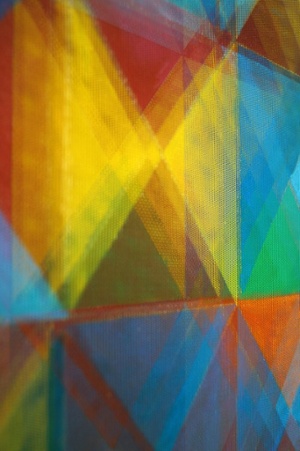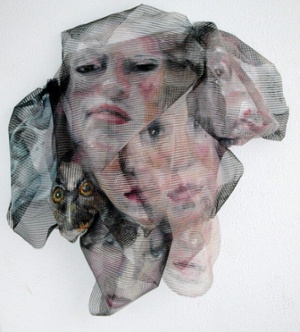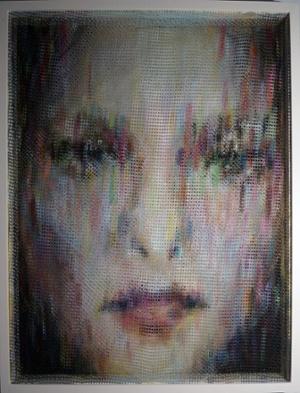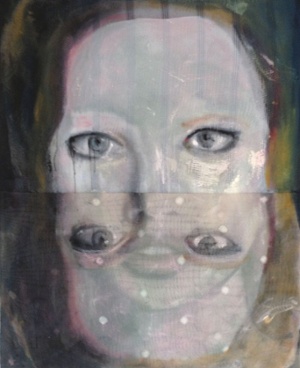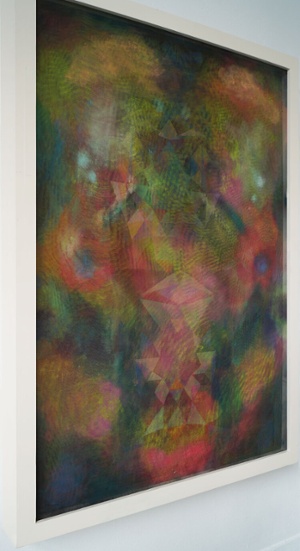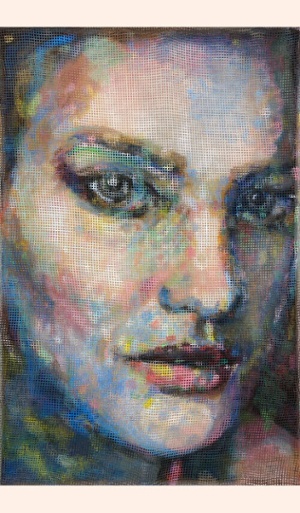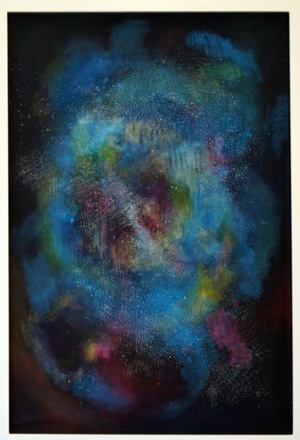
Daniella Wesseling’s paintings consist of several – typically three or four – loosely woven canvases with a widely spaced grid that leaves them semi-transparent. Every layer consists of colours and voids that fill up with the colours from underlying layers. And then there’s the interstitial space between the canvases that somehow becomes randomly ‘coloured’ by the canvases on either side .
The paintings’ appearance changes, depending on the angle of perception. Wesseling’s use of oils heightens this fluidity. The medium has an emphatic presence, is more voluminous than for example acrylic paint, but also has a liveliness and richness that come into play once light hits its surface. The artist often applies contrasting colours on different layers, resulting in mutual cancellation, but also the creation of a new space beyond religion and spirituality. on the one hand, and rational science, on the other.
Wesseling started off painting portraits, mainly of young women reminiscent of the fragile beauties depicted by 18th-century Pre-Raphaelites. They tend to wear dreamy expressions, as if they are from a different world. Simultaneously, their eyes seem to follow the viewer – extending an invitation to enter their minds, whilst also remaining aloof.
After dabbling in landscapes and still lives, and trying to visualise her own breathing – the inhale is white and the exhale is red, forming a circular pattern – Wesseling dove straight into abstraction. In a lively, Paul Klee-like pallete, she goes beyond the pictorial. The combinations of organic and geometric shapes bring to mind mandalas and totems. They are mind maps to a parallel spiritual universe.
Wesseling’s use of geometry takes its cue from Piet Mondrian’s abstract work as well as traditional Indonesian art. Both employ squares, rectangles and other geometrical shapes as a universal language to evoke and convey emotions. These shapes – used by almost every civilisation – seem to be rooted in a collective subconscious and create some kind of order in nature’s chaos.

